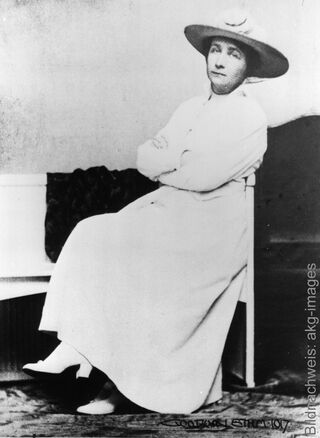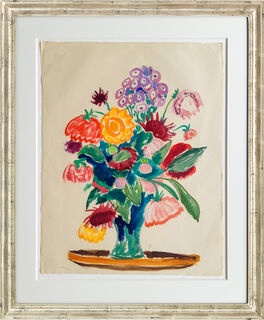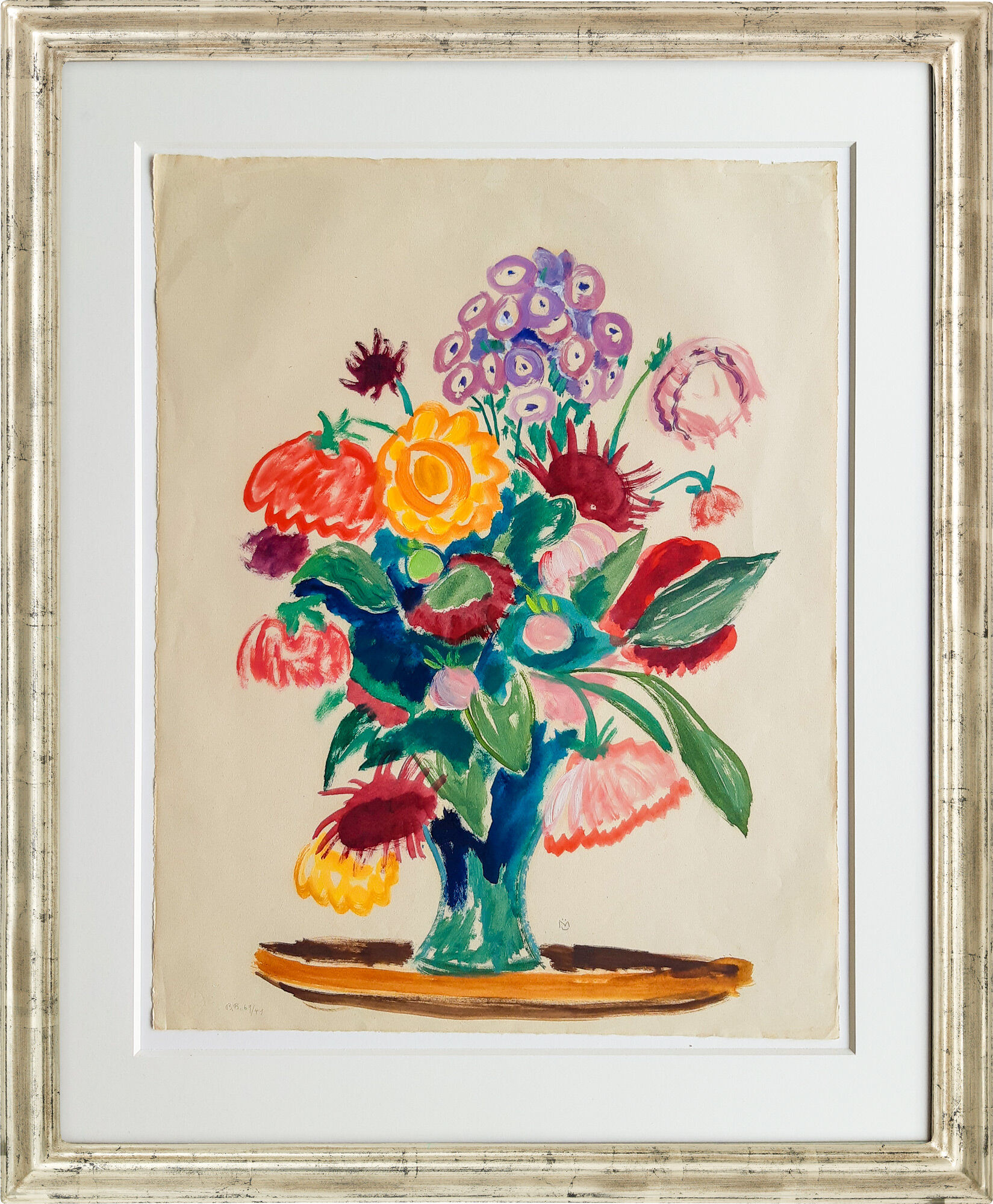Picture "Dahlia Bouquet with Phlox" (1941) (Unique piece)


Picture "Dahlia Bouquet with Phlox" (1941) (Unique piece)
Quick info
unique piece | monogrammed | inscribed | oil on paper | framed | size 85.5 x 71 cm
Detailed description
Picture "Dahlia Bouquet with Phlox" (1941) (Unique piece)
In 1931, Gabriele Münter settled permanently in Murnau, Germany, and from then on devoted herself to floral still lifes and nature studies.
The large-format work "Dahlia Bouquet with Phlox", executed in oil on paper, bears witness to this intensive artistic engagement with the subject of floral still life. An opulent, summery garden bouquet of dahlias, zinnias and sunflowers shines against an uncoloured background.
What a beautiful idea that Gabriele Münter roamed through her garden in Murnau to pick the flowers and then immortalise them in the silence of her studio.
Oil on paper, 1941. Monogrammed and inscribed B.B 69/41. Motif size/sheet size 63 x 49 cm. Size in frame 85.5 x 71 cm as shown.

About Gabriele Münter
1877-1962
Gabriele Münter was an Expressionist painter and a member of the New Munich Artists' Association but did not belong to the Blaue Reiter movement.
Gabriele Münter became known as Wassily Kandinsky's companion. She saved a significant part of his works through the war and post-war period and later made them known to the public, together with paintings by artist friends of the Blaue Reiter and her own works.
When Gabriele Münter bought a house in Murnau in 1909, which she lived in during the summer with her partner Kandinsky, the idyllically situated domicile soon developed into a centre of the avant-garde. Marc, Macke and Werefkin, Jawlensky were regular guests. They all found much inspiration for their artistic work in the area around the Staffelsee – art history likes to describe these years surrounding the founding of the Blaue Reiter as the "Murnau period".
With the beginning of the First World War and the separation from Kandinsky, turbulent years followed for Münter. In 1931, she moved to Murnau for good. The landscape in the foothills of the Bavarian Alps plays a major role in her work from this period, as it did at the beginning of the century. When Münter died in Murnau in 1962, she had long been considered, along with Paula Modersohn-Becker, the most important Expressionist painter.
A one-of-a-kind or unique piece is a work of art that has been personally created by the artist. It exists only once due to the type of production (oil painting, watercolours, drawing, etc.).
In addition to the classic unique pieces, there exist the so-called "serial unique pieces". They present a series of works with the same colour, motif and technique, manually prepared by the same artist. The serial unique pieces are rooted in "serial art", a type of modern art, that aims to create an aesthetic effect through series, repetitions and variations of the same objects or themes or a system of constant and variable elements or principles.
In the history of arts, the starting point of this trend was the work "Les Meules" (1890/1891) by Claude Monet, in which for the first time a series was created that went beyond a mere group of works. The other artists, who addressed to the serial art, include Claude Monet, Piet Mondrian and above all Gerhard Richter.


